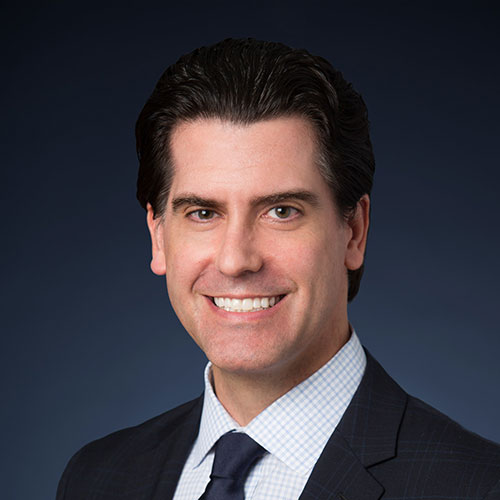Featuring Dr. Ted W. Love, President & CEO, Global Blood Therapeutics
Published May 26, 2023 | 3 min read
Key Points
- Global Blood Therapeutics (GBT) is a biopharmaceutical company dedicated to the discovery, development and delivery of life-changing treatments that provide hope to underserved patient communities starting with sickle cell disease (SCD).
- Love credits GBT’s mission and patient-driven approach leading to the discovery and development of it’s breakthrough sickle cell drug, Oxbryta.
- Pfizer’s recent acquisition of GBT reinforces their commitment to SCD, building on their 30-year legacy in the rare hematology space.
- GBT’s commitment to mission and aggressive focus on diversity and inclusion has been a core contributor to its innovation and success.
In this episode of Pathfinders in Biopharma, we flash back to a previous interview with Dr. Ted W. Love, President and CEO of Global Blood Therapeutics (GBT) in conversation with RBC Capital Markets’ biotechnology analyst Gregory Renza.
They discuss the mission-driven culture that led to the development of Oxbryta, the company’s breakthrough sickle-cell treatment, as well as the specific challenges the company faced in tackling a rare orphan disease..
Since the recording of this episode, GBT was acquired by Pfizer in October 2022, reinforcing their commitment to SCD and building on their 30-year legacy in the rare hematology space.
Greg Renza: What motivated you to join GBT as an early stage company and take it to the next level?
Dr. Love: I started my career in an academic position at Harvard and Mass General. But I was recruited by Genentech and thought that represented a really nice opportunity to leverage my background in science and medicine in a way that might produce innovative therapies.
One of the things I remember well from my clinical training is that sickle cell patients were very sad indeed. Because with sickle cell disease, unfortunately, you typically die fairly young. Our patients were almost always African American, and they were often poor. The healthcare system, quite frankly, did not have a lot of great therapy to offer them and there was a lack of enthusiasm to treat those patients. I later learned there was really a lack of enthusiasm to invest in solutions to solve their problems.
So when GBT came along, it reminded me of all the things that I had not done, and quite frankly, nobody has been doing for these patients. I saw it as a call to action for me personally.
"So when GBT came along, it really reminded me of all the things that I had not done, and quite frankly, nobody had been doing for these patients. And I saw it really as a call to action for me personally."
Dr Ted Love, President and CEO of Global Blood Therapeutics
Greg Renza: Oxbryta is GBT's first sickle cell treatment. How does it work and what impact does it have on patients and their families?
Dr. Love: Sickle cell disease is rare, only affecting about a hundred thousand patients in total in the U.S. It is a genetic disorder, so people get sickle cell disease not from anything they do, but from the genes that were passed on to them by their parents. The reason the disease is primarily associated in African Americans in the United States, is because it was largely brought into the United States through importation of slaves from Sub-Sahara Africa.
And the reason it was endemic in Sub-Sahara Africa, is that while the disease is a terrible thing to get, the trait, which is one copy of the bad gene, actually protects you from malaria. So in areas of the world where malaria was highly prevalent, this advantage of having one sickle hemoglobin gene, actually became a survival advantage. The problem is when two individuals with the sickle trait have children, one out of four of their children statistically will get two bad genes. And that is the devastating condition known as sickle cell disease.
GBT was founded on the idea of making a small molecule, which could be formulated as a simple daily tablet, that would bind to the hemoglobin and stop the hemoglobin from sticking together. And we found very early on in very simple test tube studies, we could make molecules that would very effectively stop the hemoglobin from sticking together. We advanced into animal studies, and when we went into humans, we replicated the same phenomena. We showed that we could very quickly begin to make sickle cell patients take on more of a phenotype moving towards sickle cell trait, where their hemoglobin goes up, their sickle cells are going away. We think their organ survival and their life survival will be improved. It takes time to show that, but that is the pathway that we committed to and that's the pathway that we're still very much on.
Greg Renza: How do you maintain unity, rigor and determination within a single organization to get a drug like Oxbryta from a test tube into patients’ hands?
Dr. Love: We're very intentional about all of this. Number one, we talk to ourselves about our mission and our commitment to deliver on our mission. We also, with a high degree of frequency, invite patients and caregivers into the company to meet with all of our employees to talk about their experience with sickle cell disease, and even their experience using Oxbryta and how it has led to changes for them personally, or for their patients if they're healthcare providers. We also make sure that when we're recruiting that are committed to the mission of a company. So it's a full effort. We keep our mission front and center in everything that we do.
Greg Renza: At GBT, how do you and your colleagues approach this in a way that it's not just sizing markets, but it's actually knowing and understanding them, knowing the patients, the families, and the constituents that support them?
Dr. Love: We could talk about it in marketing terms, but we could also talk about it in human terms. The vast majority of people with sickle cell disease are dead before their 50th birthday. So if we're going to improve those numbers, we're going to have to do something to get in front of the pathology that these patients are aggregating over the first 40 years of life to really give them very little life beyond that 40th birthday.
We really feel that it’s going to be important that as patients who can possibly benefit from Oxbryta get access to it. Our label covers essentially 100% of patients with sickle cell disease. The label simply says, you have to have a diagnosis of sickle cell disease and you have to be above age 12. And we're working very hard to reduce that age requirement ultimately down to six months, which is roughly the age where sickle cell begins to affect you. If only a third of the patients gained access to Oxbryta, we would be creating a tremendous benefit for those patients. And from a marketing perspective, obviously it would be a very successful drug. But I like to think about it from the perspective of what proportion of these patients can we help.
"If only a third of the patients gained access to Oxbryta, we would be doing a tremendous benefit for those patients. And from a marketing perspective, obviously it would be a very successful drug. But I like to think about it from the perspective of what proportion of these patients can we help."
Dr Ted Love, President and CEO of Global Blood Therapeutics
Greg Renza: What are your hopes for drugs and options beyond Oxbryta and how we would think about functional cure potential?
Dr. Love: Well, I think there's an analogy here with a disease like HIV. Initially, we didn't have any drugs that treated the HIV virus itself. So we used drugs like pentamidine, antifungal agents to treat the opportunistic infections that they got.
The HIV virus equivalent in sickle cell disease, in my belief, is polymerization of the hemoglobin. That is what the mutation causes. And so we are focused on stopping that as our number one cause. And that's what Oxbryta is approved to do. One of the things we do know about Oxbryta is that even with a gram and a half per day, we're not able to block enough of the polymerization to be curative. And so we focus on other efforts to see if we could invent other molecules which could get to those levels of sickle hemoglobin polymerization inhibition. And we think we're there. We hope we are there with this molecule called 601.
We also recognize there are patients who have pain already, pain that will probably persist. So we’re also developing a P-selectin inhibitor directed at downstream complications of pain crises. We want to be known as the sickle cell company, with a range of products to help these patients. Our ultimate goal is to make this a well-managed chronic condition from which patients do not die prematurely.
Greg Renza: I know that you and GBT have established ways to give back to the community in more ways than providing Oxbryta. Tell us about that.
Dr. Love: I suspect, Greg, that we are the first company ever of this age and size to actually create a foundation. But it's completely compatible with who GBT is and who we're trying to serve. We are trying to be fundamentally philanthropic, mission driven and patient driven in our core. And we want to make sure that we're delivering on that promise with the therapies that we discover, develop and commercialize and/or give away.
Featured Guest:

Dr. Ted W. Love
President & CEO, Global Blood Therapeutics
